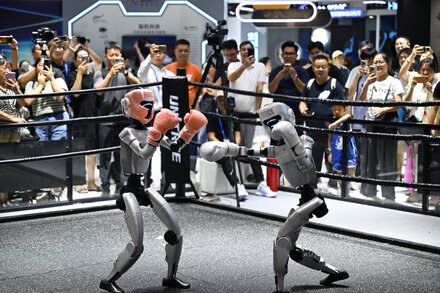
Beijing recently concluded a major technology exhibition, showcasing a wide array of advanced Chinese innovations and underscoring the nation’s ambitious drive for technological leadership. While the event highlighted significant progress in fields ranging from artificial intelligence to sustainable energy, it left many foreign observers and trade partners seeking clearer answers regarding China’s approach to global trade practices.
The exhibition, held in a sprawling convention center, featured hundreds of domestic companies unveiling cutting-edge products and research. Attendees were presented with demonstrations of next-generation autonomous vehicles, sophisticated robotics designed for manufacturing and logistics, advanced quantum computing prototypes, and breakthroughs in renewable energy solutions. Official rhetoric accompanying the displays emphasized China’s commitment to self-reliance in critical technologies and its aspiration to contribute to global scientific and industrial advancement.
“China remains steadfast in its pursuit of innovation for the benefit of all humanity,” stated a spokesperson from the Ministry of Industry and Information Technology during a press briefing. “Our technological progress is a testament to our nation’s dedication to an open and collaborative future, fostering economic growth and addressing global challenges.”
Trade Questions Linger Amidst Technological Showcase
Despite the impressive technological show, discussions surrounding persistent trade imbalances, market access for foreign firms, and intellectual property protections received notably less clarity. Foreign delegates and trade analysts present at the event expressed a desire for more concrete commitments on these contentious issues, which have fueled tensions with major trading partners, including the United States and the European Union.
Concerns over what some nations describe as “non-market practices,” such as state subsidies for domestic industries, forced technology transfer, and opaque regulatory environments, remained largely unaddressed by Chinese officials. While general assurances of continued openness were provided, specific policy changes or concessions sought by international bodies were not articulated.
“The technological prowess on display is undeniable, and we acknowledge China’s advancements,” remarked a senior trade attaché from a European delegation, speaking on condition of anonymity due to ongoing diplomatic negotiations. “However, genuine progress in our trade relationship requires more than just showcasing innovation. It demands substantive dialogue and tangible commitments on fair competition and reciprocal market access, areas where clarity was notably absent.”
Analysts suggest that Beijing’s strategy appears to be a dual one: project an image of technological strength and innovation while maintaining a degree of ambiguity on trade practices that are perceived to primarily benefit domestic industries. The event underscored China’s determination to establish itself as a global technological powerhouse, but also highlighted the ongoing challenge of reconciling this ambition with the demands for a more level playing field in international trade.
As the exhibition concluded, the prevailing sentiment among many international attendees was one of mixed impressions—awe at China’s technological trajectory, coupled with continued frustration over the unresolved questions surrounding its trade policies.
Source: Read the original article here.





